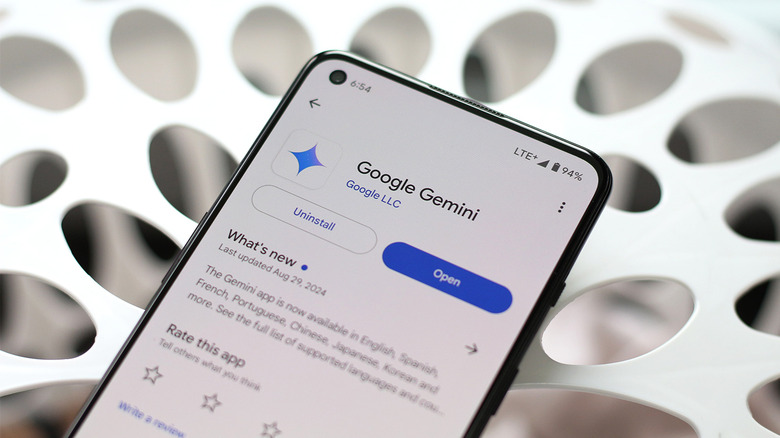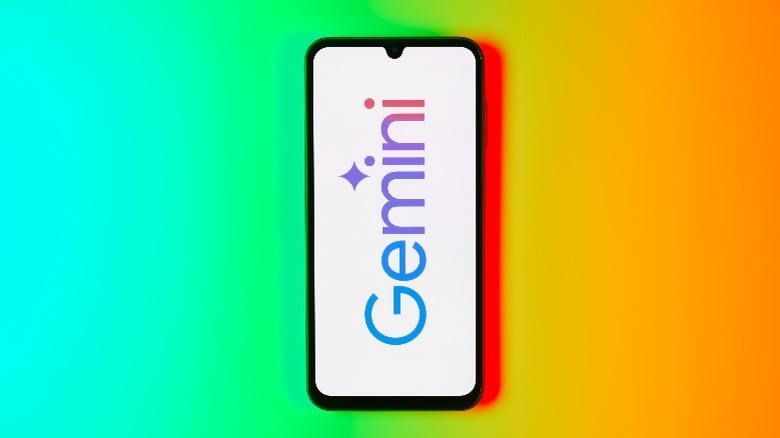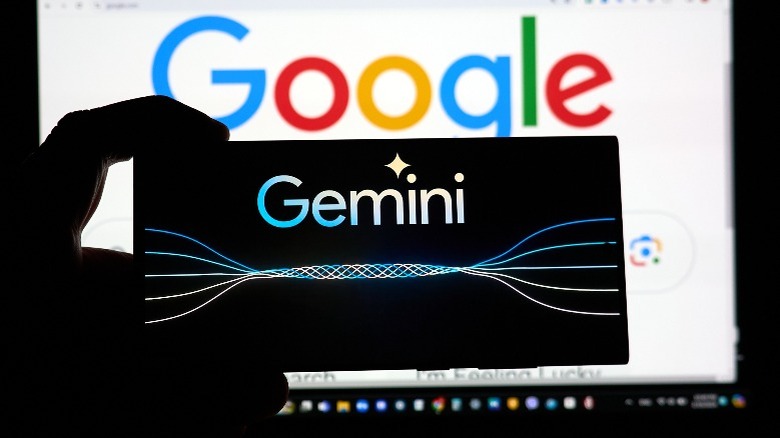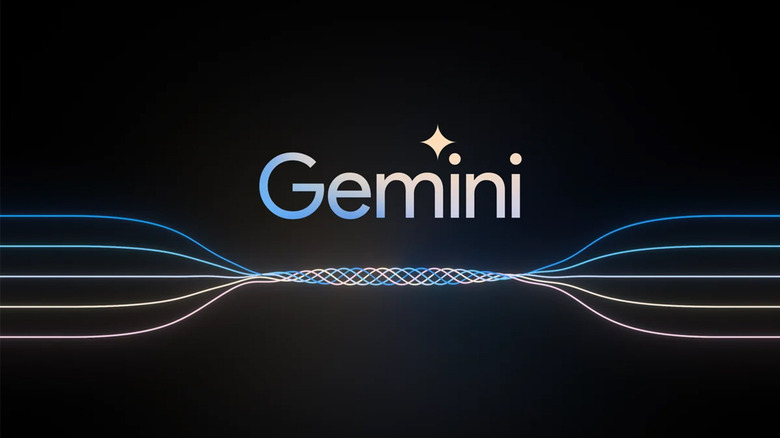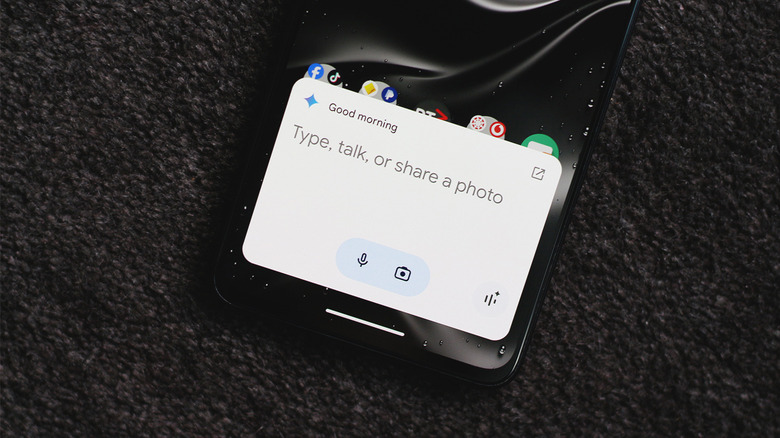What Is Gemini Nano And How Does It Compare To Google's Other Gemini Models?
The rise of AI-powered services in the last few years have had a great impact on how we use technology in everyday life. From subtle use cases like serving personalized recommendations on platforms such as Netflix or YouTube, to leveraging the prowess of generative chatbots like ChatGPT for programming — artificial intelligence now has numerous uses.
In this race for a smarter future, we've seen big names in the industry unveil their own versions of generative AI assistants. OpenAI has ChatGPT, Facebook's parent company offers Meta AI, and Google just finished up rebranding Bard as Gemini. Most of these AI assistants come in a few different versions, like GPT-4 and GPT-4o — with each model excelling in slightly different areas.
We've also seen AI features slowly crawl into new smartphone releases — and Google's Gemini Nano promises to bring the goodness of AI on Android phones. For those not following the AI space closely, the Gemini family might be a little confusing to understand. Here's what Gemini Nano is, how it can be useful in the context of Android devices, and the way it's different from Google's other AI models.
What is Google Gemini Nano?
Like the human brain, AI models are able to perform tasks that require complex reasoning abilities. This is made possible by training these models using humongous sets of information. Over time, these models are able to identify patterns and improve their efficiency and accuracy. A finished model is then implemented in a system that can be used by the end user. Typically, these AI models run their processing on the cloud, which eliminates the need for everyone to have powerful computers just so they can generate an essay using ChatGPT.
Gemini Nano leverages AI to accomplish tasks in a similar fashion and is the AI model that Google ships with their Pixel devices. The term "Nano" comes from the fact that the AI model can operate completely on-device and work without the presence of an internet connection. This offers a more seamless and secure way to use AI on your phone, though the performance of the model depends on the processing prowess of the device it's running on.
The Pixel 8 Pro has received Gemini Nano via an update, and the AI model is already being shipped with a bunch of smartphones from Samsung, Motorola, and Xiaomi. Most upcoming flagship Android smartphones should also be able to utilize Gemini Nano for on-device AI features.
Gemini Nano vs Gemini Pro and Ultra
With the release of Google Gemini, we saw the unveiling of three different AI models, namely Gemini Ultra, Pro, and Nano. Despite belonging to the same Large Language Model family, each model is designed to handle a different use case. Gemini Ultra is Google's most powerful AI model, and is tailored for handling complex tasks like programming and mathematical reasoning. It's largely oriented for use in enterprises and business, and serves as a benchmark for what Gemini could be capable of in the future.
Gemini Pro is a model can be used by anyone with a Gemini Advanced subscription, and offers a good balance between performance and efficiency. It can be used for decently complex tasks as well, and is capable of handling a good variety of prompts. More recently, Google started using the new Gemini Flash model as the default in its chatbot, and it benefits from a lightweight design and snappy responses. Gemini Nano brings a similar set of features as its elder siblings and scales it down, so Android devices can run the model offline.
Understanding the differences between the Gemini models
AI models can be evaluated based on a few key factors, such as tokens and parameters — with benchmarks providing a clearer view on how these models perform in comparison to each other. Gemini Nano is Google's most efficient AI model, which also means it's the least complex. It has two versions, with 1.8 billion and 3.25 billion parameters respectively, allowing Google to implement either one depending on how much memory an Android phone offers. Parameters are variables that can be adjusted in an AI model to improve its output, and the higher count of the Nano-2 model will yield better performance on high-end Android phones.
Gemini Pro has a context window of up to two million tokens, which according to Google, is the longest of any large language model currently. LLMs like ChatGPT and Gemini Pro break longer strings of input into tokens — which can be a single word, or even a part of a word. This process of tokenization helps machine learning models better synthesize human language. A context window refers to the amount of information or tokens a model can handle at once — making Gemini Pro highly capable of writing code or processing lengthy documents.
The Gemini Ultra model scores 90% on the MMLU (Massive Multitask Language Understanding) benchmark, which evaluates a model's ability to handle a wide variety of tasks across several disciplines including math, physics, medicine, and law — making it Google's most advanced AI model to date.
What features does Gemini Nano bring on Android?
Among the many ways Gemini AI can be useful in our daily lives, it has the potential to completely replace the Google Assistant on Android. You can already download the Google Gemini app from the Play Store and set it as the default assistant on your device. You can then summon Gemini by uttering the hotword "Hey Google", and either talk to the assistant using your voice or use keyboard input.
Apart from chatting with Gemini on your phone, the Nano model brings enhancements revolving around image recognition, speech transcription, and text summarization. On Google phones, the Pixel Recorder can not just create a transcript of your audio recordings, but also summarize them with a single tap. Gemini Nano is also integrated within Gboard, allowing you to utilize Smart Replies in conversations.
TalkBack is one of the most useful accessibility features in Android, and is now supercharged thanks to Gemini Nano. You can use the feature to get detailed and accurate descriptions of images on your phone — and this, like other Gemini Nano features, is completely offline, ensuring utmost privacy. With competition from the new Apple Intelligence features, we can expect Gemini Nano on Android to offer even more tools with future updates.
